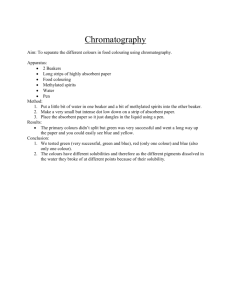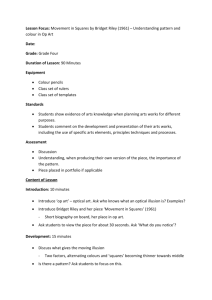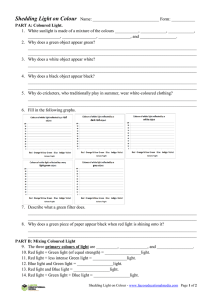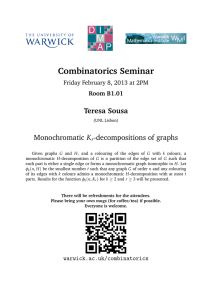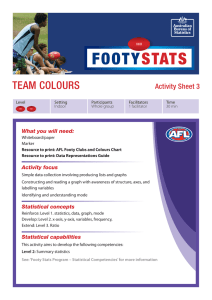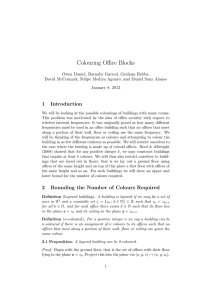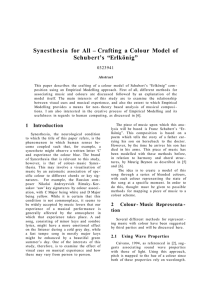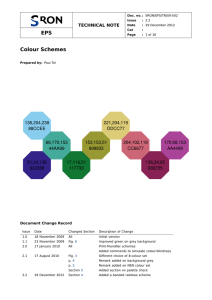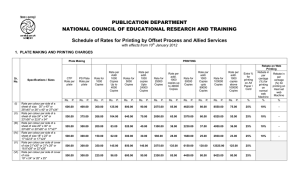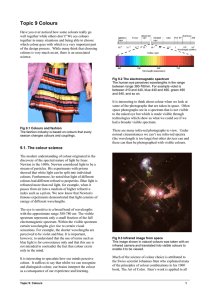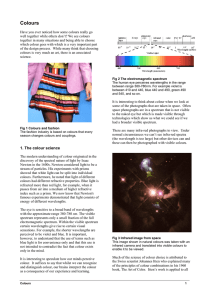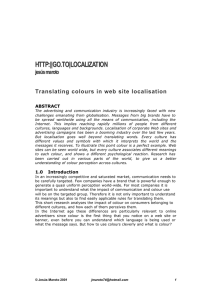MATH 503 HW 2 SOLUTIONS
advertisement
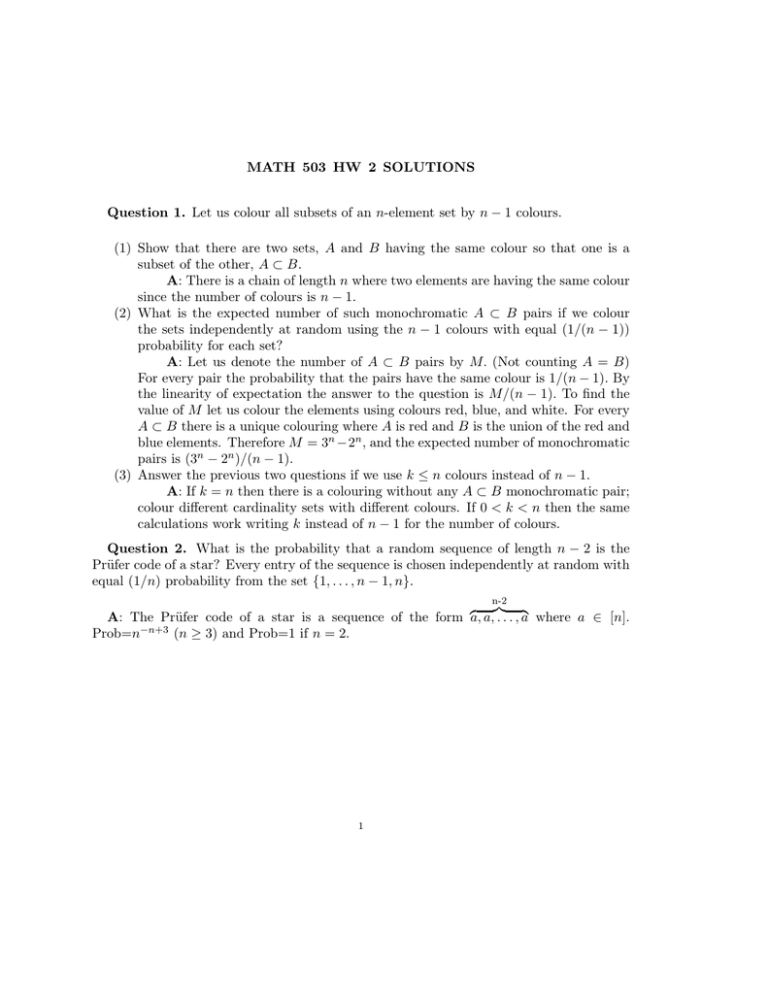
MATH 503 HW 2 SOLUTIONS
Question 1. Let us colour all subsets of an n-element set by n − 1 colours.
(1) Show that there are two sets, A and B having the same colour so that one is a
subset of the other, A ⊂ B.
A: There is a chain of length n where two elements are having the same colour
since the number of colours is n − 1.
(2) What is the expected number of such monochromatic A ⊂ B pairs if we colour
the sets independently at random using the n − 1 colours with equal (1/(n − 1))
probability for each set?
A: Let us denote the number of A ⊂ B pairs by M. (Not counting A = B)
For every pair the probability that the pairs have the same colour is 1/(n − 1). By
the linearity of expectation the answer to the question is M/(n − 1). To find the
value of M let us colour the elements using colours red, blue, and white. For every
A ⊂ B there is a unique colouring where A is red and B is the union of the red and
blue elements. Therefore M = 3n −2n , and the expected number of monochromatic
pairs is (3n − 2n )/(n − 1).
(3) Answer the previous two questions if we use k ≤ n colours instead of n − 1.
A: If k = n then there is a colouring without any A ⊂ B monochromatic pair;
colour different cardinality sets with different colours. If 0 < k < n then the same
calculations work writing k instead of n − 1 for the number of colours.
Question 2. What is the probability that a random sequence of length n − 2 is the
Prüfer code of a star? Every entry of the sequence is chosen independently at random with
equal (1/n) probability from the set {1, . . . , n − 1, n}.
n-2
z }| {
A: The Prüfer code of a star is a sequence of the form a, a, . . . , a where a ∈ [n].
Prob=n−n+3 (n ≥ 3) and Prob=1 if n = 2.
1





